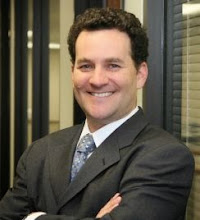In my last post, I introduced John C. Harsanyi and a paper that he wrote in 1962 on the following question: Given that parties typically do not know each other's "utility functions" (i.e. preferences and risk tolerances), how is it that people manage to reach agreements as frequently as they do? Harsanyi suggests that two mechanisms may be at work:
On the one hand it is conceivable that in a given society with well-established cultural traditions people tend to enter bargaining situations with more or less consistent expectations about each other's utility functions.
***
Alternatively, we may assume that compatibility between the two parties' final concession points is not the result of their already entering the bargaining situation with mutually consistent expectations, but is rather the result of mutual adjustment of their expectations during the bargaining process itself.
Harsanyi argues that "mecahnism II can operate only if bluffing can be brought under effective control," which he says is not possible. He argues that people do not adjust their bargaining positions in response to anything that they consider to be a bluff. Harsanyi concludes:
[M]echanism II can operate only if bluffing by the parties is brought under control... [T]his condition is rather imperfectly met in most real-life situations, which restricts the usefulness of bargaining for the purpose of testing out the opponent's true attitudes.
I have to disagree with this conclusion. First, Harsanyi discounts the ability of people to test and expose bluffing. It seems to me that people in the real world deal very frequently and effectively with bluffing. People who believe they are being bluffed typically will test the bluff by hardening their own positions. If this does not produce results, they typically will leave the negotiation. Harsanyi considers this a failure, but he ignores the likelihood of iterative bargaining, i.e., returning to the table after a failed initial session. This happens frequently in more complex disputes, whether they involve money or other interests. In fact, it seems to me that iterative bargaining is the predominant model.
Second, while Harsanyi correctly recognizes that penalizing excessive bluffing increases the effectiveness of bargaining, he seems to underestimate the degree to which the real world does in fact penalize excessive bluffing. In a transactional context, a bad bluffer will lose out on good opportunities while trying to make incremental gains on return. In litigation, the bad bluffer not only will lose out on the opportunity to make reasonable settlements, he also will suffer increased costs as litigation continues. These costs include not only the dollar expense of paying for lawyers, expert witnesses, etc., but also the time, attention, and emotional energy that litigation require.
Third, I disagree with Harsanyi's argument that people cannot obtain useful information about each other's utility functions if bluffing is permitted. Because people can and do test each other's bluffs -- such as by walking away from negotiations -- and because the real world does penalize excessive bluffing, there comes a time in every negotiation when all but the most intransigent bluffers will have to "get real."






No comments:
Post a Comment